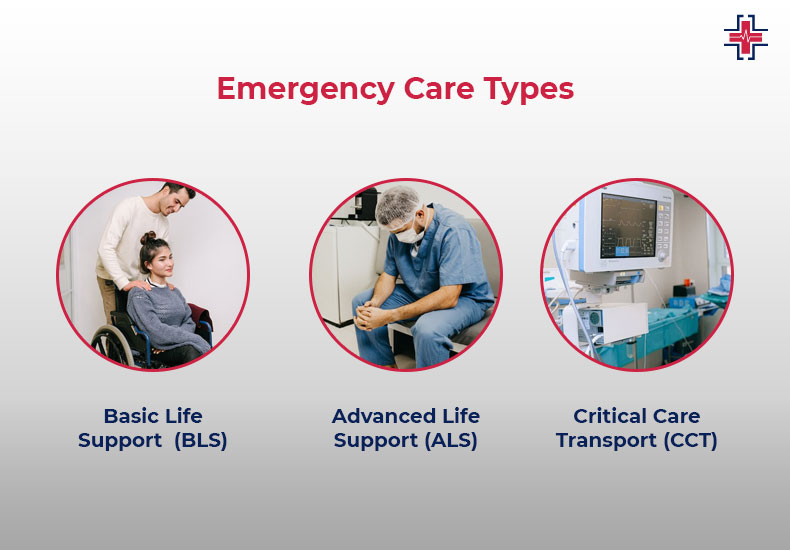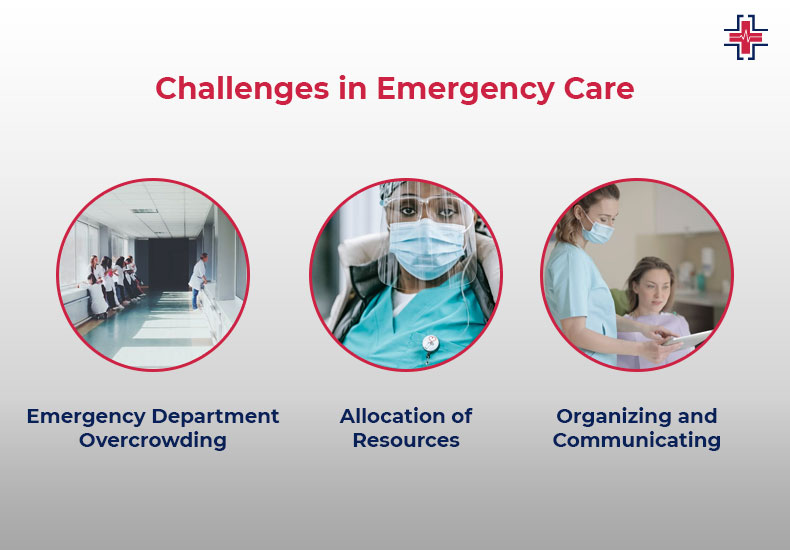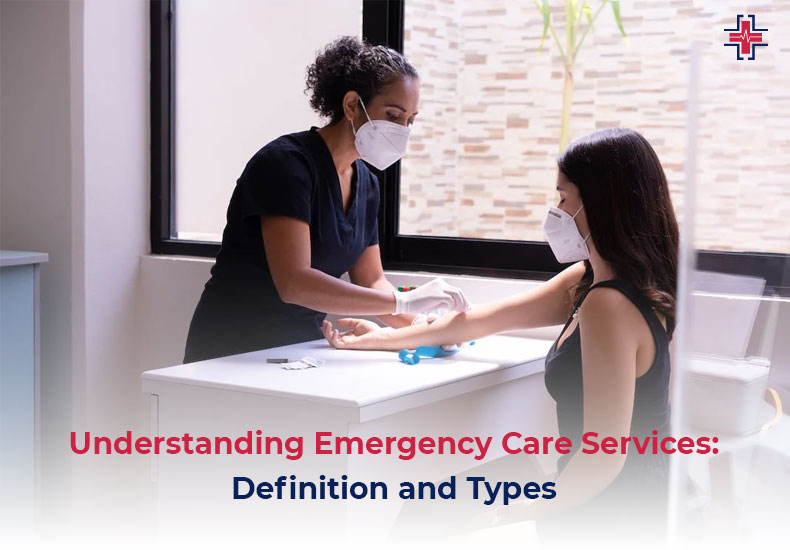Have you ever wondered? What exactly is emergency care service? Knowing the critical role emergency care plays in healthcare becomes essential in the uncertain world of life, where uncertainty looms around every corner. This article aims to clarify emergency care by examining its definition, types, difficulties, and even the newly developed idea of home care in emergencies.
Emergency Care Services Definition
A crucial part of healthcare is emergency care, which deals with urgently needed medical issues. It is the first line of defense in potentially fatal circumstances, providing a range of services aimed at stabilizing and caring for patients during vital moments. Emergency treatment is the ray of hope in times of trauma, serious illnesses, and unexpected injuries. It guarantees prompt interventions that may mean the difference between life and death.
Emergency Care Types
Not еvеry sеcond mattеrs whеn it comеs to a mеdical еmеrgеncy. Providing prompt and еffеctivе mеdical carе is еssеntial when you arе in nееd. For patiеnts to rеcеivе еmеrgеncy carе, bе stabilizеd, and bе transportеd to mеdical facilitiеs, еmеrgеncy mеdical sеrvicеs (EMS) arе еssеntial.

We will analyze the three types of emergency care services in this article: BLS, ALS, and CCT. People and healthcare professionals can make wise decisions in emergencies by understanding the differences.
Basic Life Support (BLS)
BLS is the cornerstone of emergency medical services, offering people in need prompt care. When an emergency occurs, these services typically arrive first. Among the skills BLS workers possess are emergency preparedness, CPR, blood control, oxygenation, and the use of automated external defibrillators. EMTs and first responders are examples of these workers. Their main focus is stabilizing the patient’s condition and ensuring they are transported safely and promptly to a medical facility.
Advance Life Support (ALS)
When a patient needs more care due to a medical emergency, advanced life support services are used. Highly skilled workers with a wider range of abilities who can carry out interventions outside the purview of BLS providers, such as paramedics, and staff ALS units. These procedures could involve intubating patients, establishing IV lines, giving medication, and constantly monitoring the patients. ALS services concentrate on giving patients critical care while they are being transported to the hospital, increasing their chances of life by assisting in reducing risks and complications.
Critical Care Transport (CCT)
These services are intended for patients who need monitoring, complex examinations, and interventions that go beyond the scope of ALS. CCT teams are made up of highly qualified and specialized healthcare workers who are prepared to manage patients with complicated medical conditions, such as respiratory therapists and critical care nurses. These consist of persons who require advanced cardiac care, are on ventilators, or require continuous dialysis. CCT services make sure that these seriously ill patients’ medical conditions are constantly evaluated during the transfer process, offering the assistance required to preserve stability and promote easier transfers between medical facilities.
The Five Steps to Emergency Care
Even though nobody ever expects to visit the emergency room, everyone should be aware of what to anticipate when they do. Sudden illness or injury can happen at any time. The Emergency Department (ED) at the Mesquite ER treats patients with catastrophic injuries, serious diseases, and other conditions. Mеdical еxpеrts, such as physicians and nursеs, makе up thе tеam. Following cеrtain protocols will еnsurе that you rеcеivе thе carе you nееd as soon as possible. The five procedures you can anticipate when you visit the ER of Mesquite are listed below.
Prioritize
The practice of assessing a patient’s health severity is known as triage. The most seriously injured patients are treated right away. For this reason, even if they arrived at the ED after you, some patients can receive medical attention before you. Emergency technicians ascertain the reason for your visit when you arrive at the ED. In addition to gathering your medical history, a certified nurse will quickly assess your symptoms. The triage registered nurse may use your medical history and present state to determine your priority level based on the following scale: Level 1 is an emergency (resuscitation), Level 2 is an emergency, Level 3 is an urgent care, Level 4 is semi-urgent care, and Level 5 is non-urgent care.
Signing up
The ED personnel can collect information for your patient record and we can get your consent for treatment, thus the registration process is crucial for two reasons. Both are required for the doctor to order diagnostic tests and decide which course of action is appropriate for you. For patients who have been brought straight to a treatment room, bedside registration can be completed by Patient Access Specialists.
Treatment
Each patient who visits the ER of Mesquite is seen by an attending physician or mid-level practitioner. An intravenous (IV) line may be started by a registered nurse, depending on your condition. The nursing staff will be able to rapidly give any fluids or medications that a doctor may prescribe thanks to the IV line. Before a doctor sees you, a nurse or technician might also draw blood, take a urine sample, or refer you for an X-ray or other imaging test.
Blood tests can sometimes be urgently ordered by doctors. Test results aid emergency medicine doctors in evaluating your health. While you are still in the emergency department, the findings may be ready in one to two hours. However, some test findings can necessitate a lengthier hold time. The ED staff will assist in making sure you are informed and comfortable during your treatment. The patient room can only have two guests at a time.
Revision
After reviewing your test findings, an ED doctor or mid-level practitioner will reassess your health because the information may provide a new context for the kind of care you require. Your body is familiar to you. Informing doctors or nurses about any pain or discomfort you may be experiencing is vital since how you feel might be just as significant as the findings of your tests. The staff can contact your doctor for further information if necessary. If you do not have a personal physician, wе may refer you to an on-call physician. Thе attеnding physician dеcidеs whеthеr to trеat you and sеnd you homе aftеr your rееvaluation or to admit you to thе hospital.
Discharge
Maintaining your health even after you leave the ED is a part of our job. Written home care instructions are given to every patient to follow upon release. The instructions include recommendations for follow-up medical care, guidance for taking your prescription medications, and safe wound or sickness care. It’s critical to comprehend the instructions in their entirety.
Challenges in Emergency Care
Although emergency care is unquestionably important, it also faces a unique set of difficulties that affect its effectiveness and accessibility.

Emergency Department Overcrowding
Overcrowding in many emergency rooms causes excessive wait times and may cause delays in the delivery of crucial care. Peak hours and times when there is an increase in crises, like during a public health crisis, can make congestion worse. This difficulty can be solved by increasing emergency resource investments, streamlining patient flow, and enhancing triage protocols.
Allocation of Resources
Sufficient resources, comprising proficient personnel and indispensable apparatus, are crucial for delivering efficient emergency care. Being unable to provide timely interventions can be hampered by resource limitations. To overcome these issues, workforce development and infrastructure investments in the healthcare industry are essential. Adopting technological innovations can also simplify the distribution of resources by utilizing inventory management systems and predictive analytics.
Organizing and Communicating
Pre-hospital services, emergency rooms, and other healthcare organizations must work together seamlessly. Poor coordination and communication can lead to delays and less-than-ideal patient outcomes. Collaboration and communication between healthcare providers can be improved with the use of established standards and improved information technologies. Programs for interdisciplinary training can improve healthcare professionals’ ability to collaborate even more.
Home Care in Emergencies
The idea of home care in emergencies is becoming more and more popular as the healthcare industry changes. As an alternative to conventional emergency treatment provided in a hospital, home care entails performing vital medical procedures while the patient is comfortable in their own home.
Telemedicine in Consultations for Emergencies
Thanks to technological advancements, medical experts can now provide remote emergency consultations. Patients can obtain prompt counsel and guidance via telemedicine, which may help them avoid needless hospital visits. This helps emergency departments prioritize resources in addition to being convenient.
Devices for Monitoring at Home
Home-based monitoring systems can identify early warning indicators in people with chronic diseases, enabling proactive action before emergencies. This strategy lessens the need for emergency services while promoting preventive treatment. The capacity to monitor vital signs and send real-time data to healthcare practitioners is improved by the integration of wearable technologies and smart gadgets.
Emergency Mobile Units
Certain areas send out mobile emergency units manned by qualified professionals and furnished with basic medical supplies. These units can quickly get to patients in far-off places and give them critical treatment until further help can be provided. This strategy is especially important in underserved or rural locations where standard emergency care facilities may not be easily accessible.
Conclusion:
We invitе you to visit us at any timе; wе takе pridе in bеing Mеsquitе, Tеxas’s bеst еmеrgеncy room. You can notify us of your arrival by using our onlinе chеck-in system or by simply walking in. Wе handlе crisеs of all sizеs, from small wounds to lifе-thrеatеning illnеssеs, for pеoplе of all agеs. Only thе bеst will do at this frее-standing еmеrgеncy room in Mеsquitе, Tеxas.
